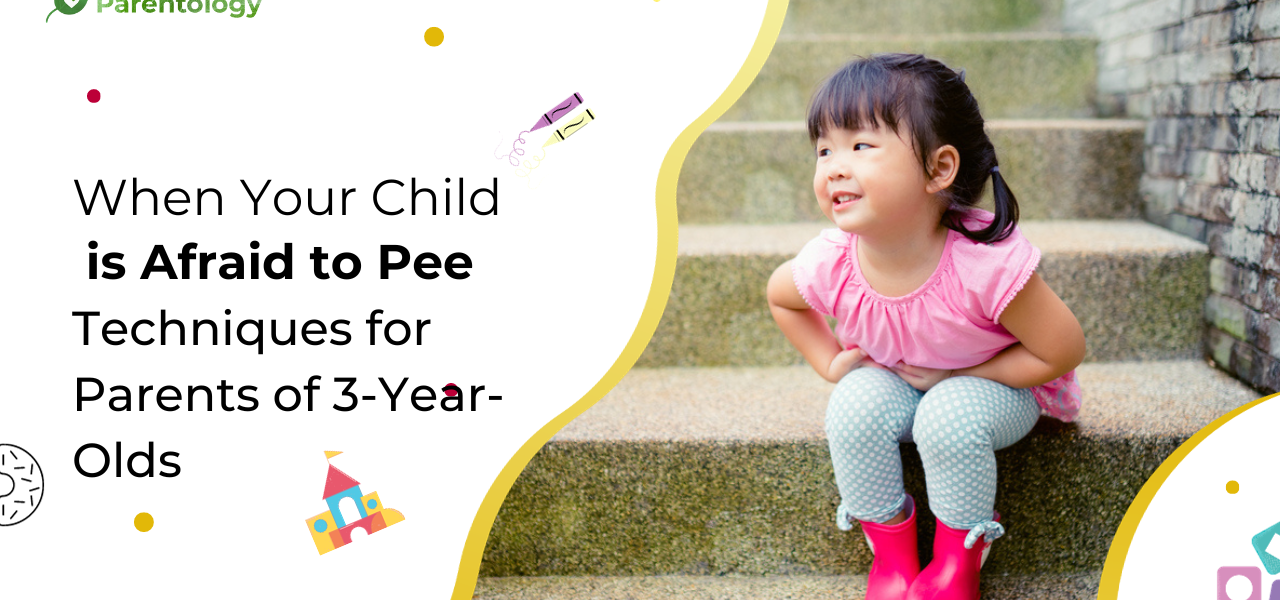3-Year-Old Holding Pee: Understanding Fear of Urinating & Coping Techniques for Parents
Understanding the Fear: Why Is Your 3 Year Old Holding Pee?
Parents often encounter situations where their 3 year old holding pee, leading to concerns about their health and behavior. Understanding the root cause is essential before implementing coping strategies. Some common reasons include:
- Anxiety and Fear: Children at this age might develop fear or anxiety related to using the toilet, usually stemming from a negative experience or an unknown fear.
- Control and Independence: Some toddlers resist urinating due to their newfound desire for control and independence, leading to power struggles during toilet time.
- Physical Sensitivity: Sensitivity to the feeling of urination might also contribute to their reluctance, causing discomfort or fear of the sensation.
Helping Your Child Overcome the Fear of Peeing
1. Creating a Comfortable Environment:
- Child-Friendly Toilets: Ensure the toilet area is child-friendly, inviting, and not intimidating. Use step stools or child-sized seats for comfort.
- Positive Reinforcement: Encourage positive associations by using rewards, praise, or small incentives for successful trips to the toilet.
2. Communication and Understanding:
- Open Dialogue: Communicate calmly and positively about using the toilet. Understand their fears by listening attentively and addressing concerns.
- Role Modeling: Show how using the toilet is a natural part of everyday life by involving siblings or other family members in the process.
3. Establishing Routine and Consistency:
- Regular Toilet Schedule: Set a consistent toilet schedule, prompting your child to use the toilet at specific times during the day.
- Reminder Techniques: Use alarms or fun reminders to signal toilet time, helping your child anticipate and prepare.
4. Addressing Anxiety and Fears:
- Gradual Exposure: Gradually introduce your child to the toilet environment or specific steps involved in using it, easing their anxiety over time.
- Books and Stories: Utilize children’s books or stories about toilet training to normalize the experience and reduce fear.
Emotional Support and Encouragement
5. Patience and Encouragement:
- Avoid Pressure: Refrain from pressuring or scolding your child when accidents happen. Instead, offer reassurance and support.
6. Empowerment and Involvement:
- Empower Choices: Allow your child to participate in choosing their toilet seat or picking out underwear, fostering a sense of control.
- Let Them Lead: Encourage independence by letting them take the lead during toilet time, within reasonable limits.
Dealing with Nighttime Holding
7. Nighttime Strategies:
- Limit Fluids Before Bed: Reduce the intake of liquids before bedtime to minimize the need for urination during the night.
- Nighttime Routine: Establish a calming bedtime routine that includes a trip to the toilet before sleep to encourage nighttime bathroom visits.
Professional Guidance and Medical Considerations
8. Seeking Professional Help:
- Consult a Specialist: If concerns persist or worsen, seek guidance from a pediatrician or child psychologist specializing in behavior or anxiety.
- Medical Evaluation: Rule out any medical conditions causing discomfort during urination or contributing to the fear.
Supporting Your Child’s Progress
9. Celebrating Milestones:
- Acknowledge Progress: Celebrate small victories and milestones achieved in using the toilet, reinforcing positive behavior.
- Consistent Support: Provide ongoing support and encouragement, even as your child progresses, to maintain a positive approach.
Maintaining a Positive Outlook
10. Stay Positive and Patient:
- Be Patient: Understand that overcoming this fear might take time. Stay positive and patient throughout the process.
- Consistency Is Key: Consistent efforts, coupled with positivity and encouragement, will eventually yield progress.
Understanding the Role of Anxiety and Stress
Recognizing Signs of Anxiety:
- Behavioral Cues: Watch for signs like increased irritability, refusal to use the toilet, or discomfort when discussing bathroom-related topics.
- Physical Symptoms: Some children might experience physical symptoms like stomach aches or increased restlessness due to anxiety.
Implementing Relaxation Techniques
1. Relaxation Exercises:
- Deep Breathing: Teach your child simple deep breathing exercises to alleviate anxiety during toilet time.
- Visualizations: Encourage visualization techniques, like imagining a favorite place, to help relax while using the toilet.
Accommodating Individual Preferences
2. Personalized Approaches:
- Preferred Accessories: Allow your child to choose toilet-related accessories, such as fun toilet paper designs or hand soap, promoting comfort.
- Preferred Environment: Respect your child’s preferences for using a specific toilet or maintaining a certain level of privacy.
Encouraging Peer Interaction and Learning
3. Peer Learning Opportunities:
- Playdates and Socialization: Arrange playdates or social gatherings with peers who have successfully navigated toilet training, fostering learning through observation.
- Sibling Influence: Encourage positive sibling interactions, as older siblings can often serve as positive role models during toilet time.
Introducing Positive Reinforcement Techniques
4. Creative Rewards and Encouragement:
- Reward Charts: Utilize colorful and interactive reward charts, marking successful toilet trips and offering rewards for milestones achieved.
- Verbal Affirmations: Use affirmative phrases like “I’m proud of you for trying” to reinforce their efforts, irrespective of outcomes.
Seeking Community Support and Resources
5. Parental Support Groups:
- Joining Support Networks: Engage with parent support groups or forums where experiences can be shared, providing a sense of community and guidance.
- Professional Consultation: Consider consulting a child psychologist or behavior specialist for personalized advice and strategies tailored to your child’s needs.
Frequently Asked Questions (FAQs) of 3 Year Old Holding Pee
Q 1: My 3 year old holding pee all day. What should I do?
Ans 1: Address the issue by creating a comfortable toilet environment, maintaining regular toilet schedules, and encouraging positive reinforcement.
Q 2: How do I know if my child has a medical problem causing this behavior?
Ans 2: Consult a pediatrician to rule out any underlying medical issues causing discomfort or pain during urination.
Q 3: Is it normal for a 3-year-old to hold urine for long periods?
Ans 3: While occasional resistance is common, prolonged holding of urine may signal an underlying fear or issue that needs addressing.
Q 4: My child was previously toilet-trained but has regressed. What should I do?
Ans 4: Regression in toilet training is common and might occur due to stress, changes, or fears. Revisit positive reinforcement techniques, maintain consistency, and provide reassurance.
Q 5: Is punishment effective in helping my child overcome their fear of urinating?
Ans 5: Punishment can exacerbate fears and create negative associations with using the toilet. Focus on positive reinforcement, encouragement, and understanding.
Q 6: How long does it typically take for a 3-year-old to overcome this fear?
Ans 6: The duration varies for each child. Some may overcome it in weeks, while others might take longer. Consistency, patience, and support are essential throughout.
Q 7: What if my child’s fear of urinating affects their social life or causes distress?
Ans 7: Seek professional help if your child’s fear significantly impacts their daily life, causes distress, or affects social interactions.
Q 8: Could underlying medical conditions cause a child to resist urinating?
Ans 8: Yes, certain medical issues like urinary tract infections or constipation can cause discomfort or pain during urination, contributing to fear. Consult a doctor to rule out medical concerns.
Q 9: Should I restrict fluids to prevent accidents?
Ans 9: Balancing fluid intake is essential. While limiting fluids before bedtime can help with nighttime accidents, ensure your child stays adequately hydrated during the day.
Q 10: How can I manage accidents without upsetting my child?
Ans 10: Respond calmly to accidents, offering comfort and reassurance. Focus on cleaning up together without making your child feel ashamed or guilty.
Conclusion:
Understanding the multifaceted nature of a child’s fear of urinating and implementing varied coping techniques can empower parents to support their child through this phase effectively. By incorporating relaxation techniques, personalized approaches, positive reinforcement, and seeking community support, parents can assist their child in overcoming this fear with patience and understanding.
As a parent, your role in creating a supportive, nurturing environment is pivotal. For a comprehensive understanding of various parenting challenges and access to expert advice, explore the diverse resources available at Parentology, offering valuable insights and guidance.





